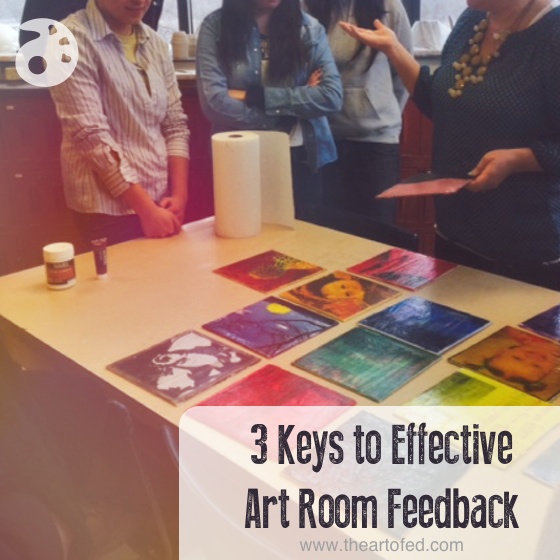If you are an education nerd like me, the Grant Wiggins article “Seven Keys to Effective Feedback” gets your wheels spinning! The piece, published in the September 2012 issue of Educational Leadership, always reminds me that although crafting good feedback takes time and thought, it is well worth the effort. Current research shows that useful feedback can have a deep impact on student achievement (if you are really ready to geek out, check out the work of John Hattie). These studies and findings aren’t just useful in math and reading, they apply to arts education too.
Change Your Feedback Methods to Help Students Reach Their Potential
1. Nix the value judgements…or at least explain them.
I know it is so hard to do, but telling kids, “Good job!” or “This is B work,” doesn’t really give them any information on what they need to do next or where they are in relation to their learning goals. Wiggins suggests adding a “mental colon” after the judgement statement. For example, “Good job: I can see that you are really using color to place emphasis on this part of the composition.”
2. Stay away from too much advice.
We are always striving to help our students express ideas through art, but we often coach them out of their own ideas. How often do you say things like, “Maybe you should try adding some blue over here?” Up your feedback-to-advice ratio by asking students to use your feedback to make decisions. For example, “We’ve talked about using color to emphasize certain parts of your composition. What ideas do you have about improving your piece?” Soon your students will start to generate this type of thinking on their own.
3. Give it when it counts.
Feedback is pretty much useless when it only comes at the end of a lesson or unit. Where is the opportunity to improve? How can kids learn to adjust course or edit if there isn’t timely guidance and feedback along the way? Intentionally planning times throughout the lesson for offering feedback will help students learn before it’s too late.
Do you struggle with when and how to give feedback to your students?
Do you have a system in place that works for you? We’d love to hear your comments and questions below!
Magazine articles and podcasts are opinions of professional education contributors and do not necessarily represent the position of the Art of Education University (AOEU) or its academic offerings. Contributors use terms in the way they are most often talked about in the scope of their educational experiences.





